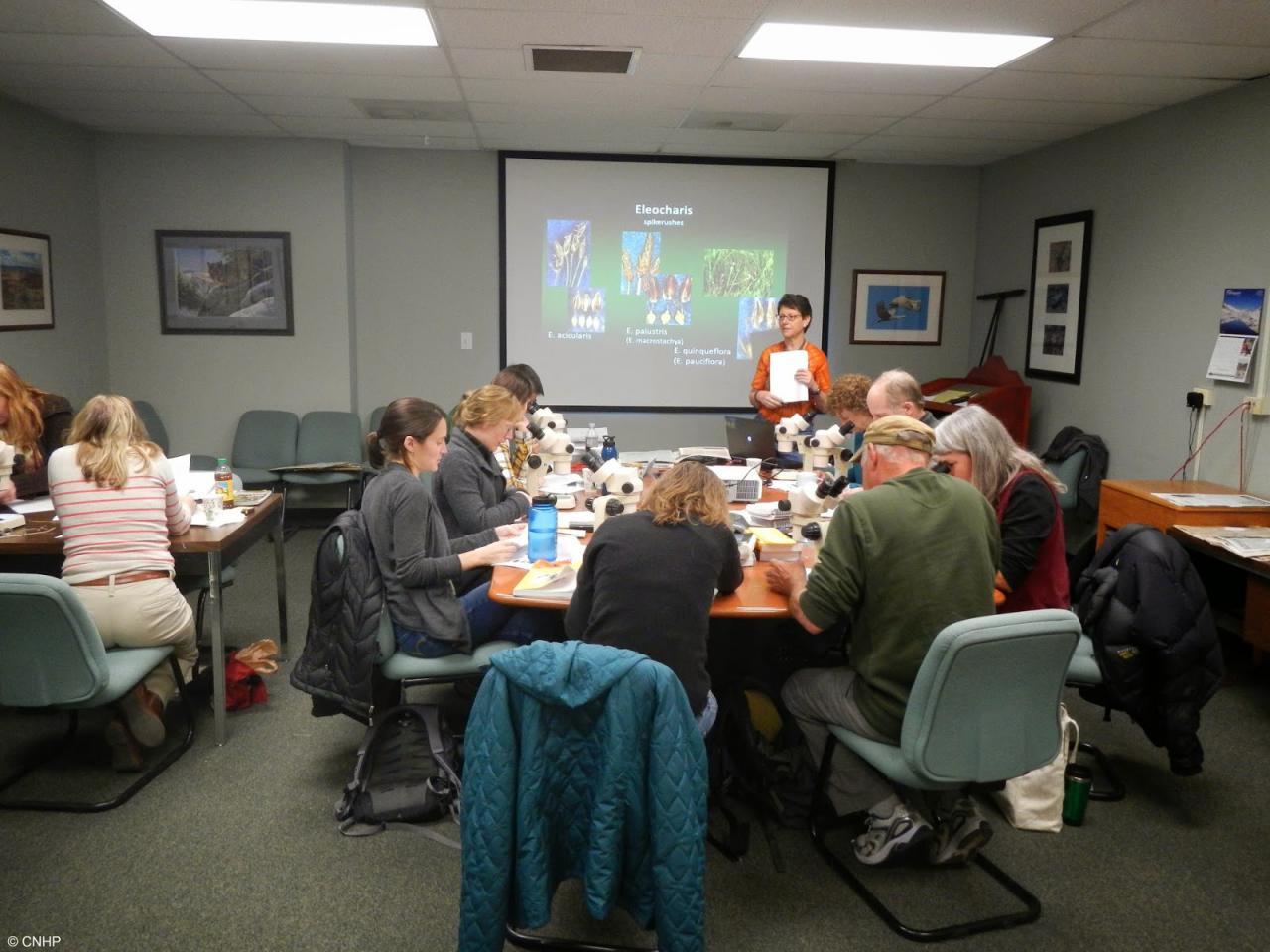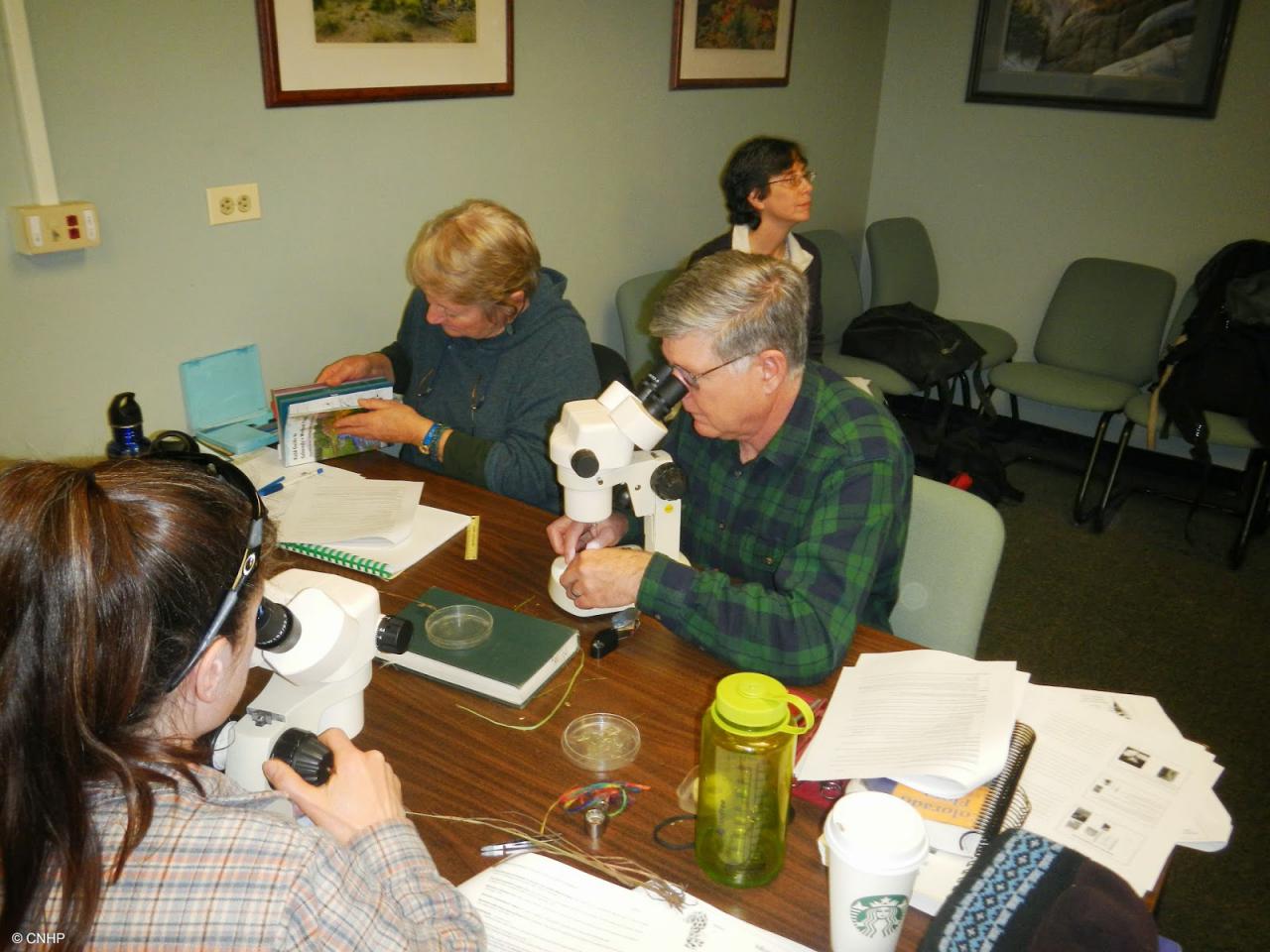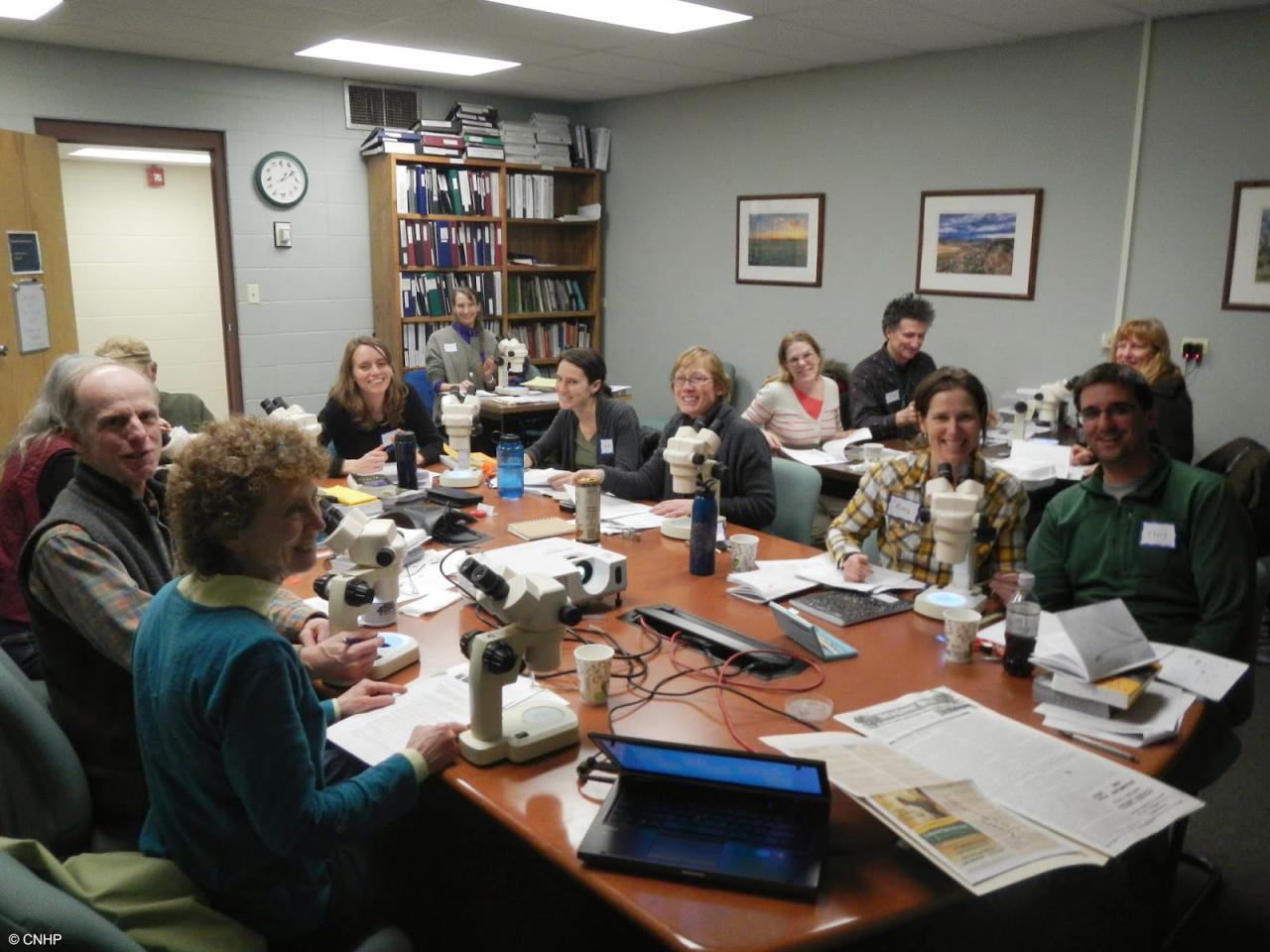By Pam Smith, CNHP Field Botanist/Ecologist
 |
| Denise Culver, Wetland Ecologist teaching the enthusiastic workshop attendees. |
People came from Boulder, Denver, Estes Park, Fort Collins and Golden to Colorado State University to attend a workshop hosted by the Colorado Natural Heritage Program (CNHP). Thirty people from a variety of backgrounds including consulting firms, local, state and federal governments, resource management, CSU students and retired biologists came to a Colorado Native Plant Society workshop on one of the more difficult groups of plants to identify – the sedges (Cyperaceae family). Although the study of this group can be challenging, workshop leader Denise Culver, a wetland ecologist at CNHP made it fun! Rhymes, fun metaphors and a few jokes added to the learning experience.
 |
| Pat Murphy (CoNPS) and Kate Dwire (USFS) making an identification determination on one of the sedge samples provided during the workshop. |
Denise recently published a book on wetland plants in Colorado and the sedge family is a large part of her book. (Psst, if you want a copy they are available online at: Field guide to Colorado’s Wetland Plants)
Workshops not only provide great hands on experience for participants but provide an excellent forum for networking with other potential partners and colleagues throughout the state. The connections and experiences of the participants add to the knowledge and usefulness of the gathering. There was added excitement as the group found out they would get a preliminary copy of the much awaited book, Key to the Colorado Sedges, by Janet Wingate, which is not currently available to the public. Wingate’s book is useful to identify a particularly tough group in the sedge family from the genus Carex. The participants learned about 15 different species including cottongrasses, spikerushes, bulrushes in addition to the Carex group.
 |
| Smiling workshop members enjoying the challenge of learning about sedges. |
Perhaps you have heard the little saying “sedges have edges and rushes are round”…, well it turns out it is not all that easy, and many new tricks and information were provided so that people would have tools to make proper identifications to the species level. Many of the people attendees work with plants as part of their job and are aware that proper identification can lead to better management practices. Denise also provided information on the ecological importance of sedges including wetland soil stabilization, water filtration, and wildlife habitat and food. People were interested to hear that very few of the sedges are weeds, with the majority all native to Colorado. Armed with a full day of learning and networking, everybody seemed excited for the upcoming field season to get outside to find and identify those wonderful, albeit tricky, members of the sedge family.
 |
| Sprengel’s sedge (Carex sprengelii) is an example of one of the members of the Cyperaceae family that can be found in Colorado. |




